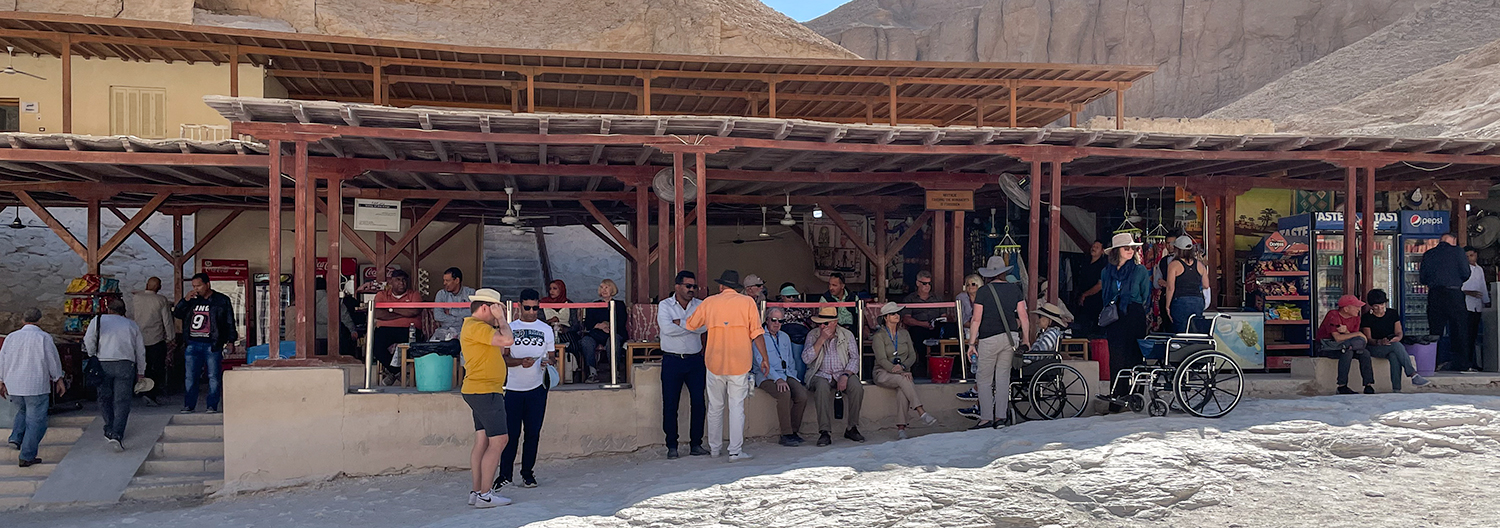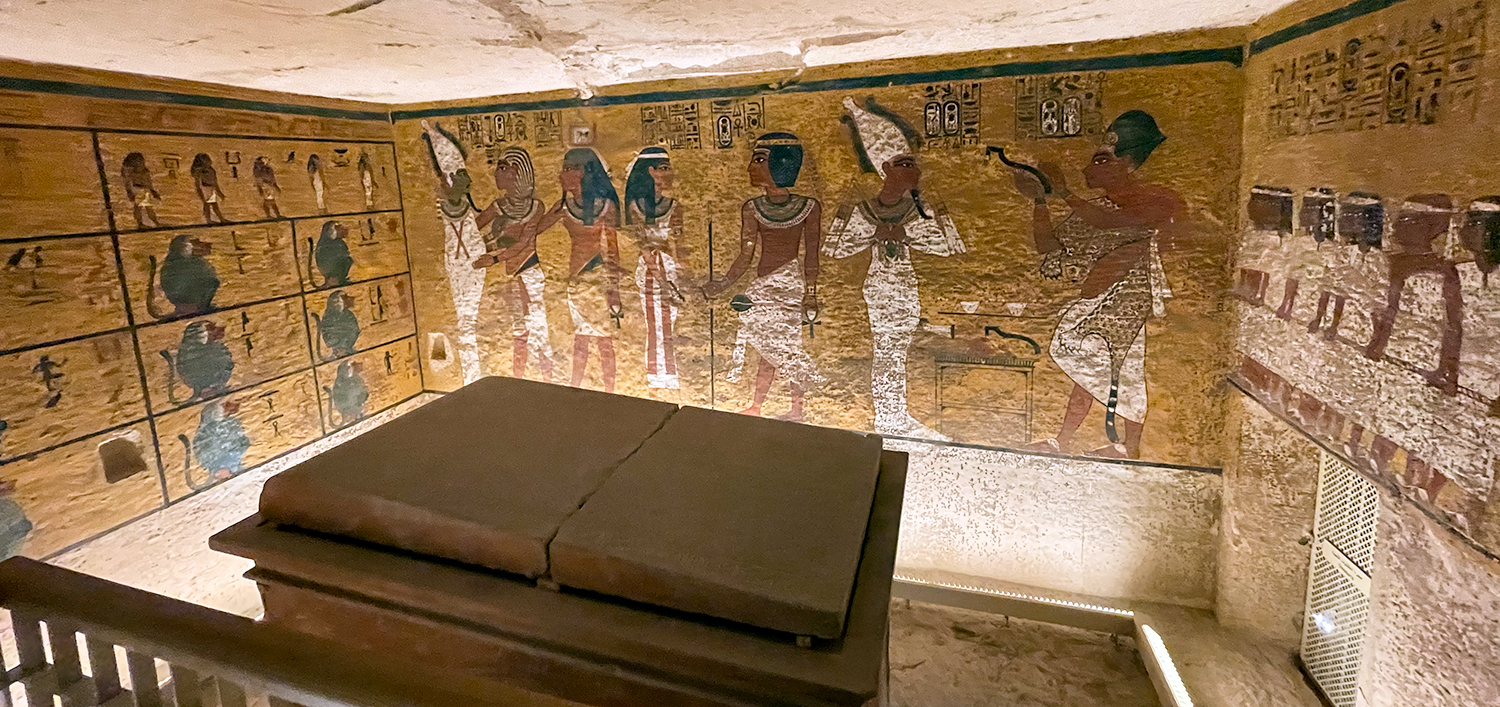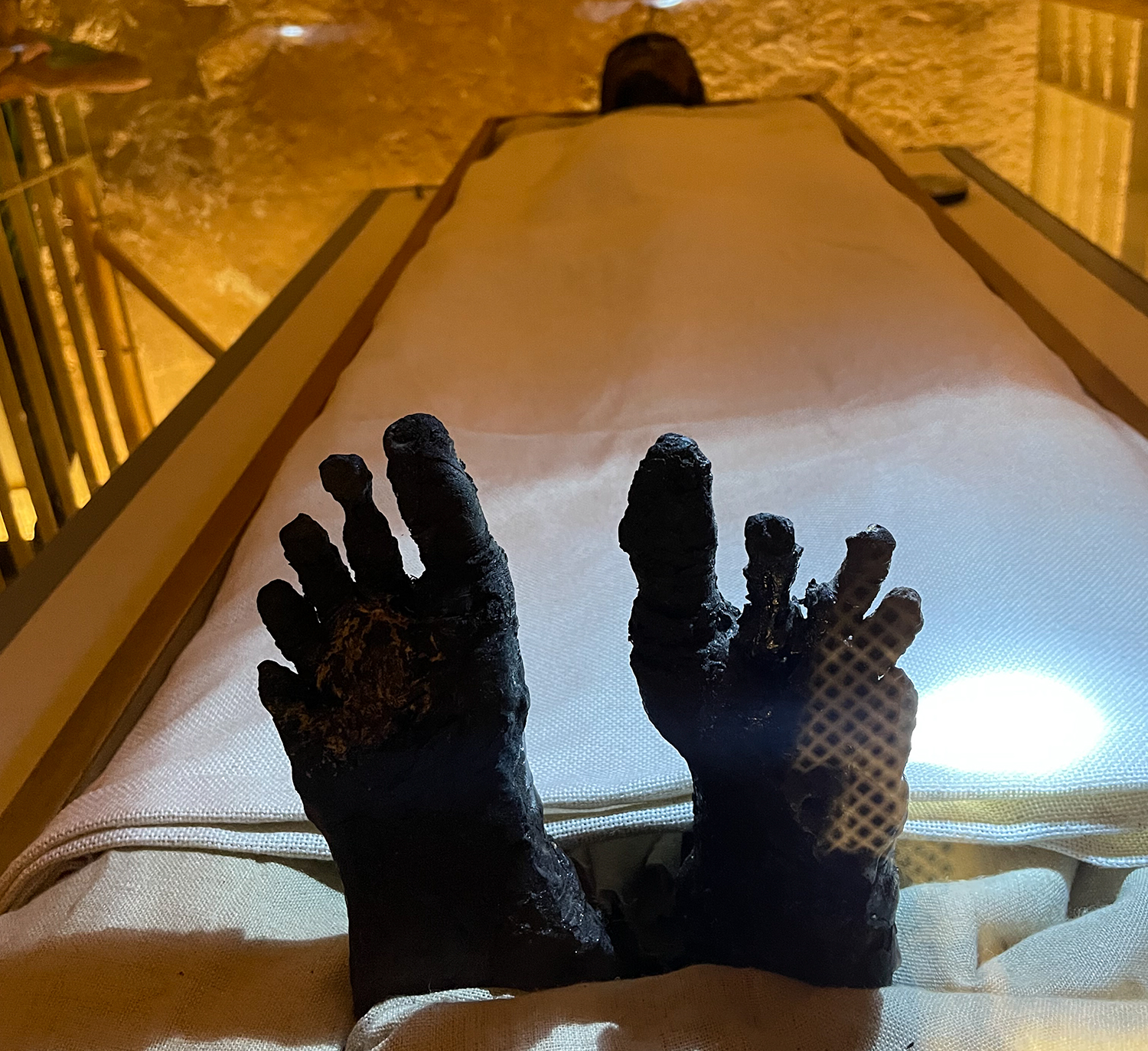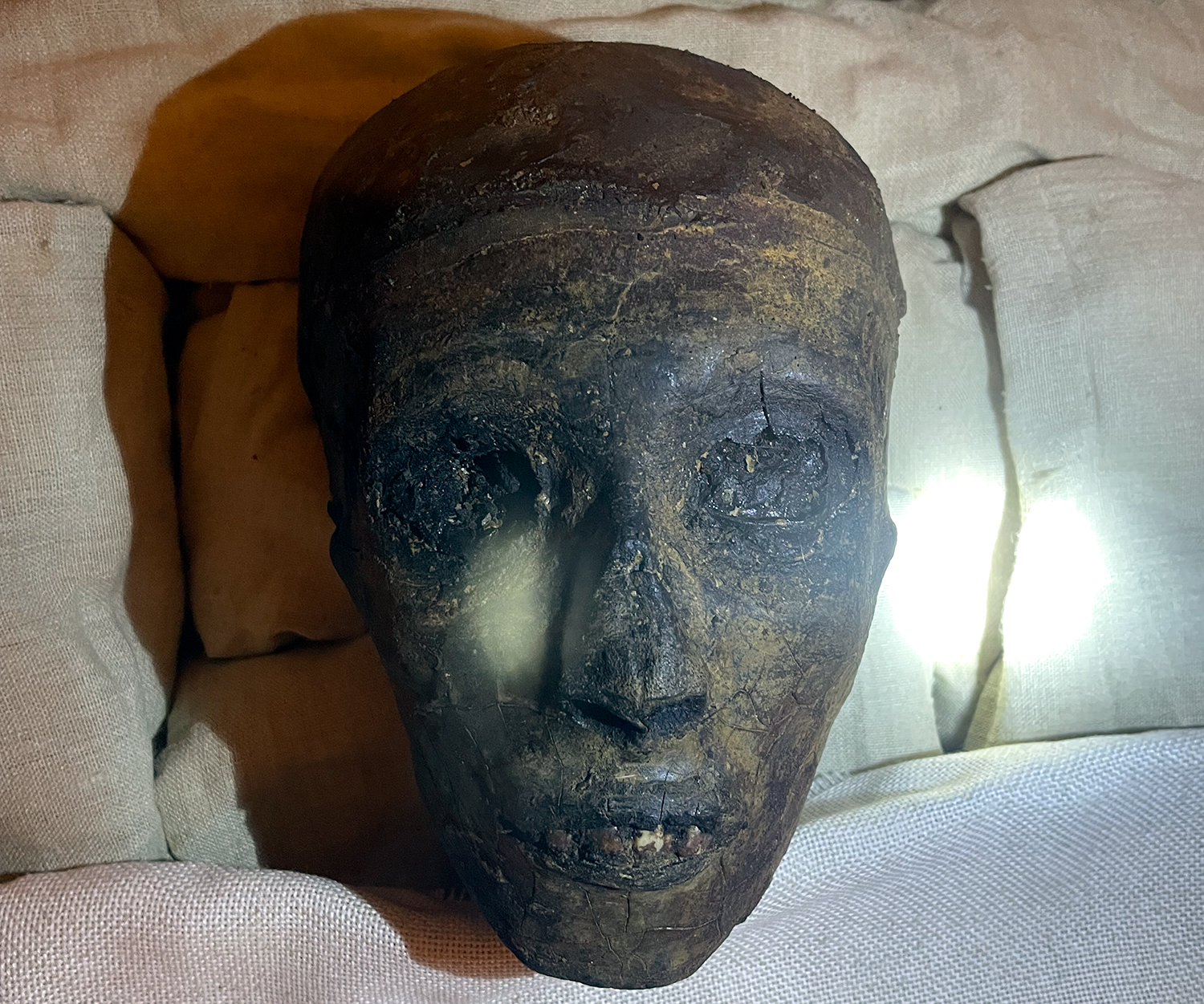Luxor–west side of the Nile and the Valley of the Kings
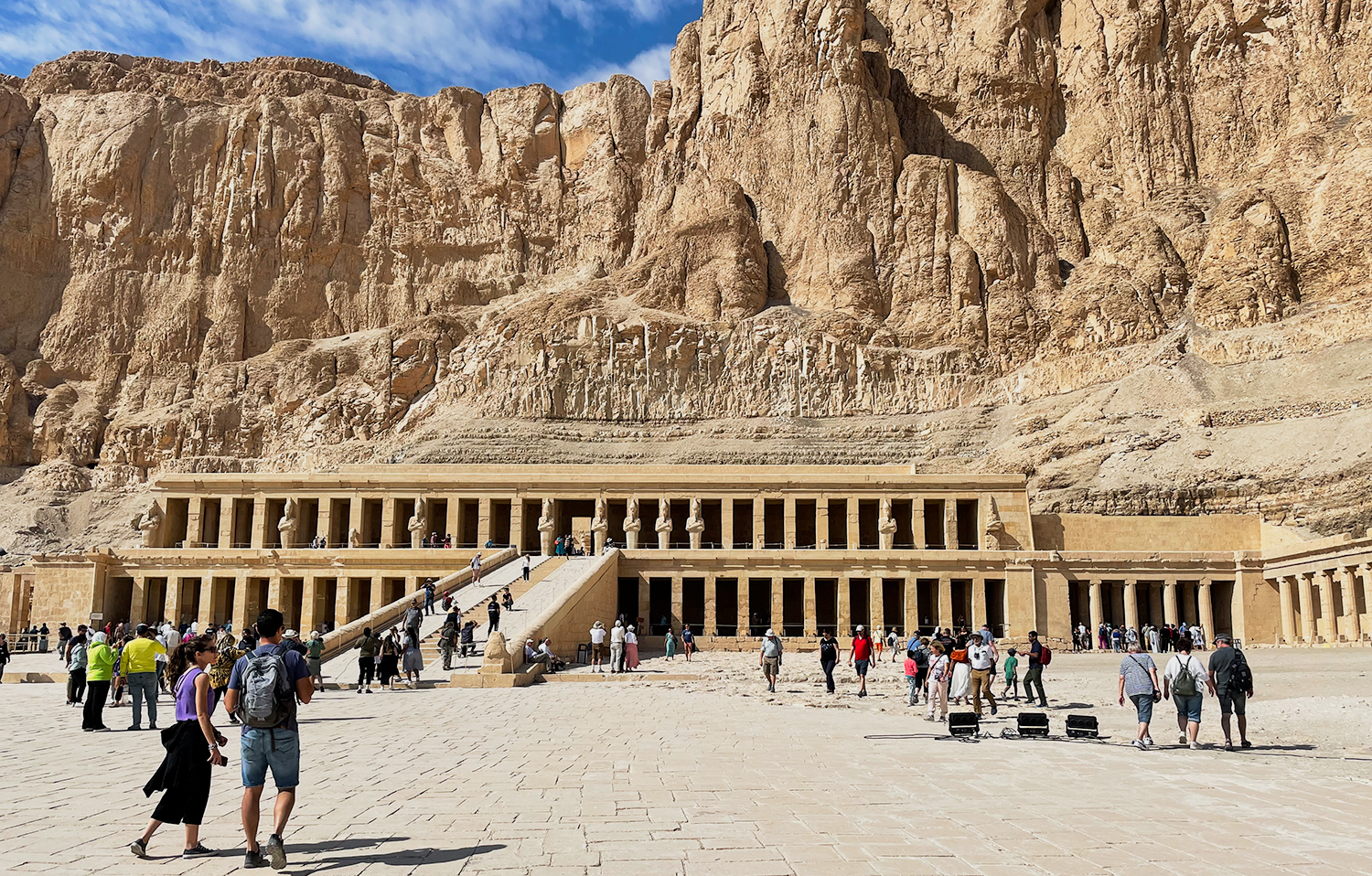
Hatshepsut (1508-1458 BCE) was regent to her stepson the young Thutmose III. When the young heir approached the age at which he would assume the position of Pharaoh, Hatshepsut made a daring power play:
“Hatshepsut declared herself pharoah adopting the emblems and titles associated with the title. She had herself portrayed in pictures as a man, with a male body and false beard. She even claimed the god Amun as her father and insisted that he meant for her to take charge of Egypt: “I acted under his command; it was he who led me.” (NatGeo)


Two 60 foot statues of Amenhotep III (1386 to 1349) stand before his now destroyed mortuary temple, and one was once world famous for singing.
“Due to an earthquake at 27 BC, the northern Colossus was partially destroyed, collapsing from the waist up and cracking the lower half. Following this event, the remainings of the northern colossus started to “sing” an hour or two before sunrise, right at dawn.
The sound was mostly heard in the months of February or March but this might have been because those were the months when people were mostly reported to visit the statues. The sound was described as a “blow” according to the Greek historian and geographer Strabo, who heard the sound on his visit to the Colossi of Memnon in 20 BC.
The legend about the “Vocal Memnon” says that it brought good luck to those who listened to its strange sounds. This rumor became known outside of Egypt, which brought many foreign visitors, including several Roman Emperors in search of the blessing that the “Vocal Memnon” could bring.“
Alas, the singing statue was restored and afterwards refused to sing.

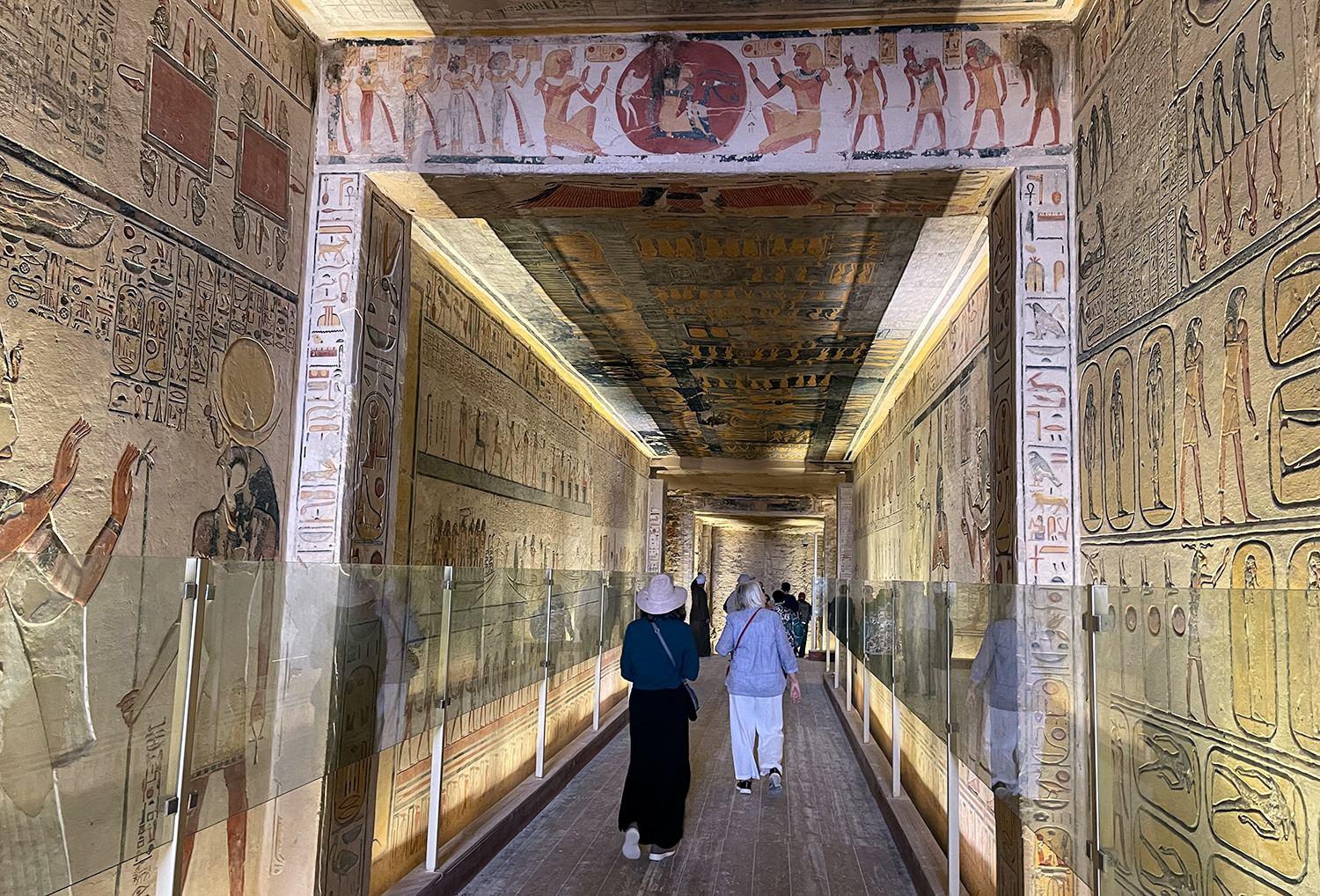
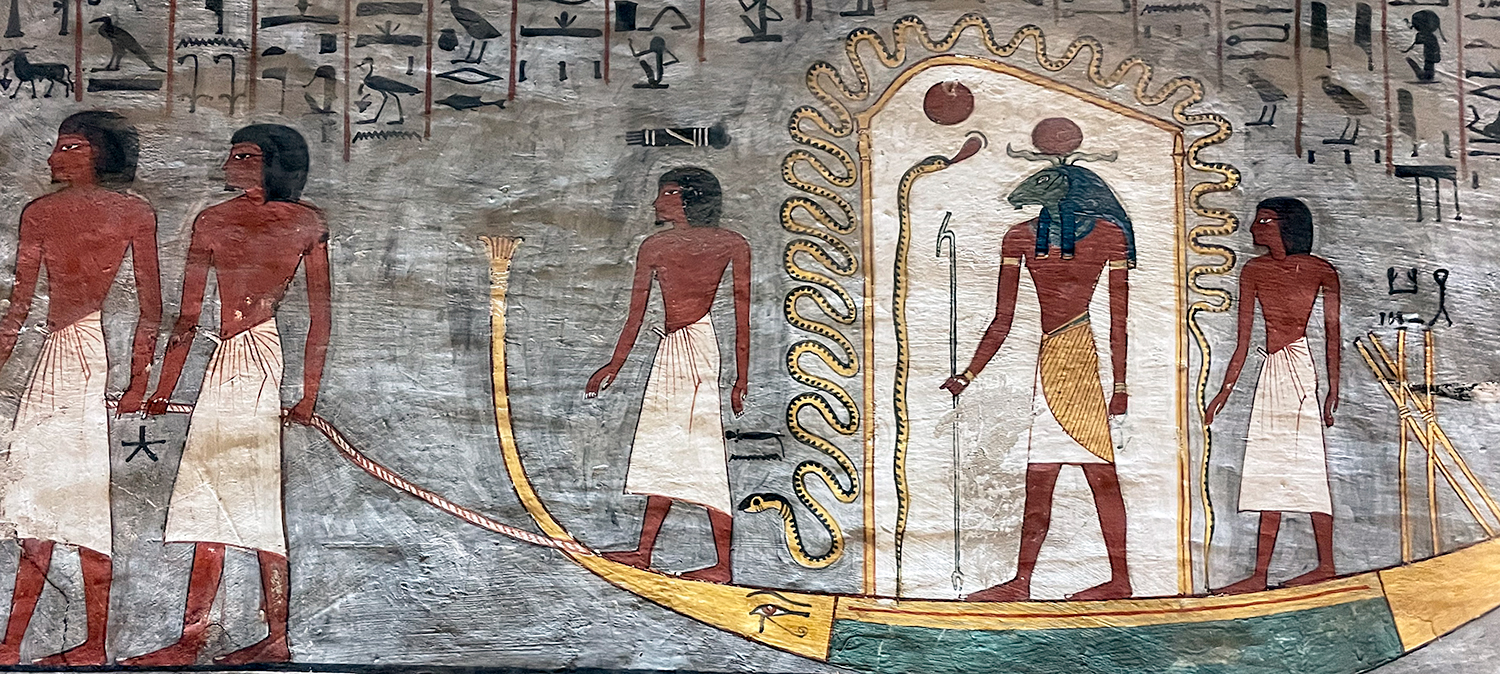
The wall painting above is a good example which with to point out some characteristics of Egyptian art. The human form on tomb walls is depicted with different perspectives incorporated into one two-dimensional representation: “The face is rendered in profile while the eye is viewed frontally; the shoulders are viewed straight on, while the torso, buttocks, and legs are see in profile.” With some exceptions, tomb wall paintings were accomplished by a sort of an Egyptian paint by the numbers process. A square grid of 18 red lines was marked on the wall as a guide for placement of parts of the human body onto the grid. “A standing male is eighteen squares from the bottom of his feet to his hairline, the width of the shoulders was six squares; his entire head three squares.
Using the square grid as guide, an outline of the main elements in the scene was drawn on the wall. Next, a master artist made a final outline in black ink. Finally, a master painter filled in the outline, or a stone cutter took up the chisel and mallet for the finish work.. Generally speaking, human figures portrayed in art change little from tomb to tomb and remains consistent over most of 3000 years–as much craft as art.
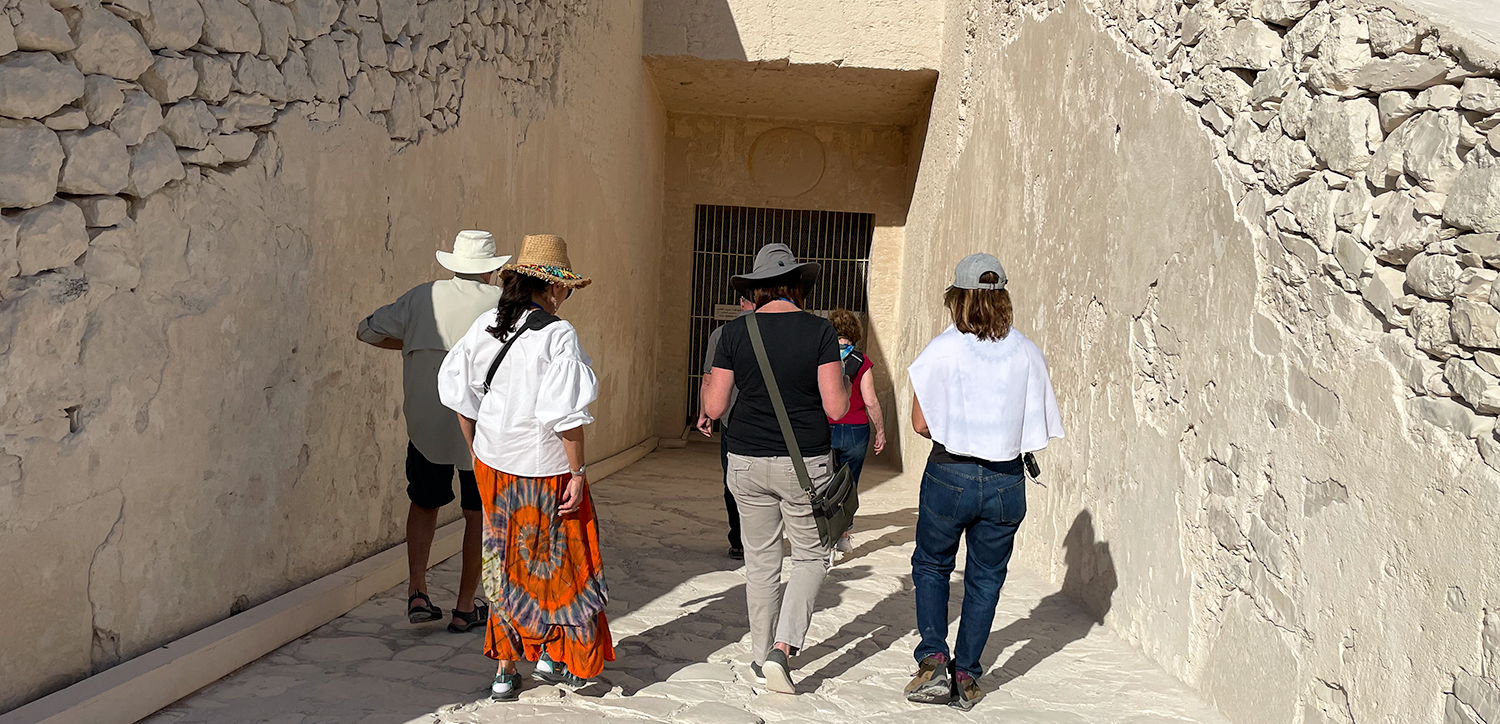
Of all the several open tombs in the Valley of Kings, the two we enjoyed the most were the tomb of Ramses VI (KV9) and just below and to the right, the tomb of Tutankhamun. Entrance to the to KV9 requires a small extra fee, but worth it.

